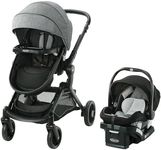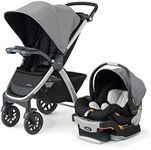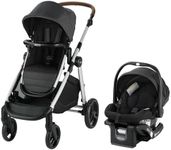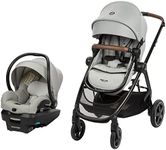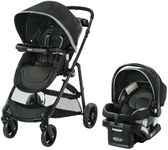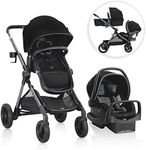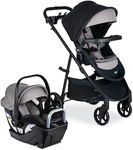Buying Guide for the Best Stroller Travel Systems
Choosing a stroller travel system is an important decision for parents who want convenience and flexibility when moving around with their baby. A travel system typically includes a stroller and a compatible infant car seat that can be attached to the stroller frame. The right choice depends on your lifestyle, how you plan to use the system, and your specific needs as your child grows. Understanding the key features will help you make a choice that keeps your baby safe and comfortable while making your life easier.Car Seat CompatibilityCar seat compatibility refers to how well the included infant car seat fits with the stroller and whether it can be used with other car seat brands. This is important because it affects how easily you can move your baby from the car to the stroller without waking them. Some travel systems only work with their own brand's car seat, while others offer adapters for different brands. If you already have a car seat or plan to use a specific one, make sure the travel system is compatible. If you want maximum flexibility, look for systems that support multiple car seat brands.
Stroller Weight and SizeThe weight and size of the stroller determine how easy it is to carry, lift, and store. Lightweight strollers are easier to maneuver and transport, especially if you use public transportation or have limited storage space. Heavier strollers may offer more features and stability but can be harder to handle. If you travel often or need to lift the stroller in and out of your car frequently, a lighter and more compact model is ideal. For those who prioritize comfort and extra features, a larger stroller might be a better fit.
Fold MechanismThe fold mechanism describes how the stroller collapses for storage or transport. Some strollers offer one-hand or quick-fold options, making it easier to fold the stroller while holding your baby. Others may require more steps or both hands. If you often need to fold the stroller quickly or with one hand, look for a simple, intuitive folding system. If you have more time and space, a more complex fold might not be an issue.
Maneuverability and WheelsManeuverability is about how easily the stroller moves and turns, which is influenced by the type and size of the wheels. Larger wheels and suspension systems handle rough terrain better, while smaller wheels are best for smooth, urban surfaces. If you plan to use the stroller on sidewalks, in malls, or for travel, smaller wheels may be sufficient. For outdoor walks, parks, or uneven surfaces, look for larger wheels and good suspension for a smoother ride.
Storage SpaceStorage space refers to the basket and pockets available for carrying baby essentials like diapers, bottles, and shopping bags. A larger storage basket is helpful for longer outings or if you need to carry a lot of items. If you travel light or only use the stroller for short trips, a smaller basket may be enough. Consider your daily routine and how much you typically carry to decide on the right amount of storage.
Adjustability and ComfortAdjustability includes features like reclining seats, adjustable handles, and footrests, which contribute to your baby's comfort and your own convenience. A seat that reclines fully is important for newborns, while adjustable handles make it easier for parents of different heights to push the stroller comfortably. If you want the stroller to grow with your child or be used by multiple caregivers, look for models with more adjustable features.
Safety FeaturesSafety features include a secure harness, reliable brakes, and a sturdy frame. A five-point harness keeps your baby safely strapped in, while easy-to-use brakes prevent the stroller from rolling away. A strong frame ensures stability and durability. Always check for these features and make sure they are easy to operate. If you plan to use the stroller in busy or uneven areas, prioritize strong safety features.
